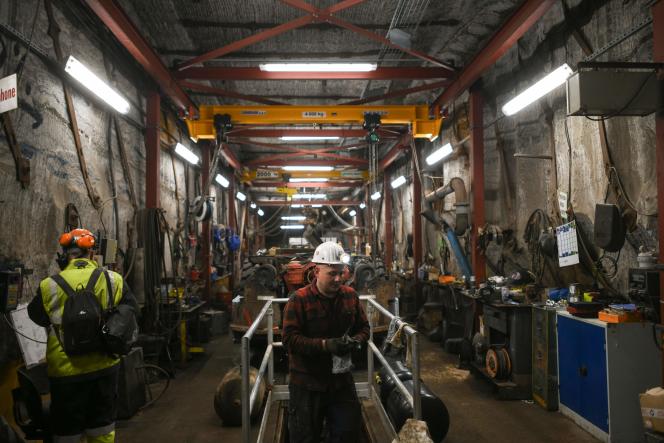The preparatory work for the closure of the Stocamine hazardous waste storage site in Wittelsheim, in the Haut-Rhin department has barely started when it is suspended. On a provisional basis.
“The work is suspended until the court, which will decide shortly, examines the legality of the substance of the decree”, taken by the prefect of Haut-Rhin in January, announced, Wednesday, May 25, Strasbourg Administrative Court. He had been seized on May 10 as part of an interim suspension procedure by the European Community of Alsace (CEA) and the Alsace Nature association. A new hearing on the merits concerning this work will therefore take place by the end of 2022. “There is serious doubt as to the legality of the decision to allow the work to continue, in particular the backfilling of Block 15 and the completion of certain containment barriers of the galleries of the mine, “argued the administrative court in a press release.
Near the water table in Alsace, the largest in Europe, this former potash mine, whose galleries are gradually sinking, still has, 550 meters underground, some 42,000 tonnes of hazardous industrial waste. (asbestos, arsenic…) but not radioactive, buried at the turn of the 2000s.
The state of the mine in question
Arguing the deterioration of the state of the mine, the Haut-Rhin prefecture had authorized the launch of preparatory work for the closure in January, although a dispute on the merits is still in progress as to the definitive storage or not of the waste.
This work, which began on May 10, entrusted to the BTP Bouygues group, concerns the construction of impermeable concrete plugs. Then in June was planned the final backfilling of “block 15”, where a fire had occurred in 2002 which abruptly ended the addition of new waste. Since that date, the future of Stocamine, originally supposed to remain a non-permanent repository, has been a source of disagreement and uncertainty.
After procrastinating a lot, the State, in the person of the Minister for Ecological Transition at the time, Barbara Pompili, had decided in January 2021 in favor of a final burial of the remaining waste. But the administrative justice canceled the prefectural decree in October 2021, to the great satisfaction of communities and environmental defenders demanding that as much waste as possible be removed as long as the galleries are accessible.
A new decree must still be taken after an opinion from the environmental authority and a public inquiry. “We have won the battle against the state twice, but we are far from having won what we want, namely the destocking of all waste for the protection of the water table”, reacted to from Agence France-Presse Me François Zind, lawyer for Alsace Nature.
Securing groundwater
For its part, the ECA said it was “satisfied” with the decision of the administrative tribunal. Pending the decision on the merits, “the compromise proposal of the European Community of Alsace [confinement of the galleries in poor condition and of block 15 and removal of as much waste as possible] still stands”, she underlined in a press release, hoping “to be able to move forward positively in the resolution of this file” with the arrival of Amélie de Montchalin as Minister of Ecological Transition.
The Potash Mines of Alsace (MDPA), operator of Stocamine, for their part did not wish to comment on this court decision, which they “will implement”. During the hearing held on May 19 before the administrative court, Céline Schumpp, amicable liquidator of MDPA, said that she was not “in haste, but in security”, because “the mine is closing and if we want to make the water table safe, we have to confine ”.
Stocamine is also still the subject of a criminal investigation regarding the exact nature of the buried waste. The 2002 fire took two months to be completely extinguished. Yet regulations normally forbade the storage of any “flammable product” on site. In addition, a 2016 public inquiry report noted that the filling of the Stocamine galleries with water from the Alsace groundwater table was “inevitable”, within seventy to three hundred years.














